A Comprehensive Introduction to Fast Website Design and Its Necessity
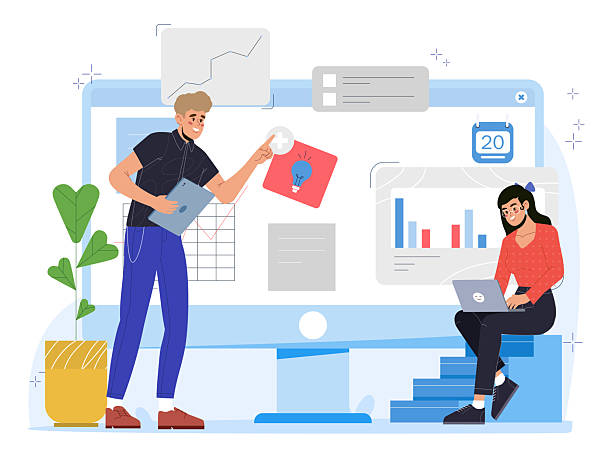
In today’s digital world, where speed is paramount, fast website design is no longer a luxury option, but a vital necessity for any business and even any individual who intends to have an effective online presence.
Your website’s loading speed not only directly affects user experience but also plays a significant role in your search engine rankings.
This topic, fast website design, is the foundation for attracting visitors, retaining them, and ultimately converting them into customers.
Imagine a user entering a site where they have to wait minutes for each page to load; they will likely leave the site before the content fully displays.
This is where the importance of #site_speed, #user_experience, and #SEO simultaneously reveals itself.
From an explanatory perspective, the main goal of this discussion is to clarify the various aspects of site speed and how to achieve it so that your website is not only beautiful but also incredibly fast and efficient.
Speed optimization means providing a smooth and pleasant user experience that leads to user loyalty and ultimately to the growth of your online business.
Web design today strongly requires attention to technical details to ensure that the website not only looks beautiful but also functions quickly and flawlessly.
Are you tired of losing business opportunities due to not having a professional corporate website?
Rasaweb, with its professional corporate website design, helps you:
✅ Build a powerful and reliable image for your brand
✅ Convert website visitors into loyal customers
⚡ Get a free consultation right now!
Why Website Loading Speed is the Key to Success in User Experience and SEO?
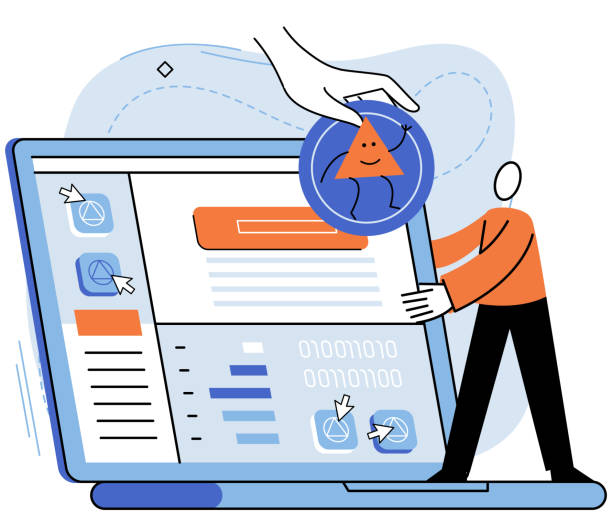
Website loading speed is the cornerstone of successful SEO and a flawless user experience (UX).
From an analytical perspective, research has shown that every second of delay in page loading can lead to a significant decrease in conversion rates, an increase in bounce rate, and user dissatisfaction.
Today’s users are more impatient than ever and expect sites to load instantly.
For example, Amazon has estimated that every 100 milliseconds of delay in page loading can reduce their sales by 1%.
These figures indicate the direct impact of speed on revenue.
On the other hand, search engines like Google consider site speed as one of the important ranking factors.
Slow sites, even with excellent content, may rank lower in search results than faster sites.
Google constantly updates its algorithms to provide the best possible experience to its users, and speed is an essential component of this experience.
Fast website design not only means fast content loading but also includes quick responsiveness to user interactions and smooth navigation.
Investing in site speed optimization is, in fact, an investment in your long-term online success.
Key Factors for Achieving Fast Website Design

Achieving fast website design requires a deep understanding of numerous technical factors that affect website performance.
From a technical perspective, the first and most important step is image optimization.
High-volume images can severely reduce loading speed.
Using next-generation image formats like WebP and proper image compression, without compromising quality, is essential.
Second, optimized and compressed coding (Minification) for HTML, CSS, and JavaScript files.
Removing whitespace, comments, and unnecessary code can reduce file sizes and increase their processing speed.
Third, using browser caching, which allows the browser to store static site files (such as images, CSS, JS) so that they don’t need to be re-downloaded on subsequent visits.
Fourth, database optimization, especially for sites using content management systems like WordPress.
Cleaning up redundant data and optimizing database tables can significantly improve server response time.
Finally, choosing appropriate web fonts and optimizing their loading is also very important for the final website speed.
All these factors work together to create a fast and efficient website design.
The table below outlines some of these factors and related solutions:
| Key Factor | Explanation | Optimization Solution |
|---|---|---|
| Images | Large size and inappropriate image formats | Compression, WebP format, Lazy Load |
| HTML, CSS, JS Code | Bulky and uncompressed code | Minification, Gzip compression |
| Cache Memory | Non-use or incorrect cache configuration | Activating browser and server cache |
| Web Fonts | Loading multiple heavy fonts | Using system fonts or limiting the number of fonts |
The Vital Role of Hosting and CDN in Fast Website Performance and Design
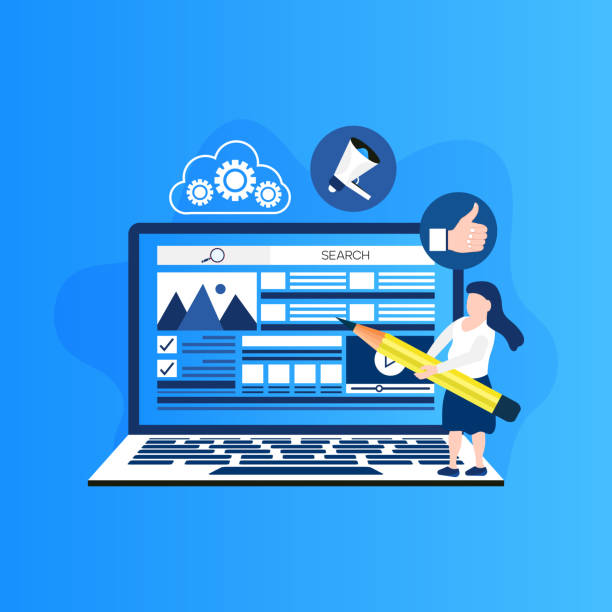
Beyond optimized code and compressed images, your web hosting infrastructure plays a vital role in achieving fast website design.
Choosing suitable hosting is the first important step.
Shared hosts with limited resources often lead to reduced speed, especially if your site has high traffic.
In contrast, Virtual Private Servers (VPS), Dedicated Servers, and Cloud Hosting provide more resources and guarantee better performance.
Server response speed (Time To First Byte – TTFB) is a key metric that directly depends on your hosting quality.
The lower the TTFB, the sooner the user’s browser starts receiving information, and consequently, the site loads faster.
In addition to hosting, using a Content Delivery Network (CDN) is also essential for achieving fast website design on a global scale.
A CDN delivers content from the closest server to the user by storing copies of your website’s static content (such as images, CSS, JS) on multiple distributed servers around the world.
This significantly reduces latency and improves loading speed for users in different parts of the world.
The right choice of CDN and hosting is an integral part of a comprehensive strategy for fast website design.
Don’t have a corporate website yet and missing out on online opportunities? With professional corporate website design by Rasaweb,
✅ Double your business credibility
✅ Attract new customers
⚡ Free consultation for your corporate website!
Advanced Code Optimization Techniques for Fast Website Design

To achieve a fast and stable website design, beyond the basic principles, advanced code optimization techniques are required.
This section provides you with practical guidance in this area.
One such technique is Asynchronous Loading for JavaScript and CSS files.
Instead of the browser waiting for these files to fully load before starting to render the page, asynchronous loading allows the main content of the page to be displayed sooner.
This can be done using the `async` and `defer` attributes in script tags.
Another technique is Lazy Loading for images and videos.
This method ensures that multimedia content is only loaded when the user scrolls to that part of the page, which significantly reduces the initial page load and helps to increase site speed.
Furthermore, Code Splitting in modern JavaScript applications, which divides the code into smaller chunks and loads them only when necessary, is also highly effective.
Removing Render-Blocking CSS and JavaScript from the top of the page and moving them to the bottom of the page or loading them inline for critical content significantly helps improve initial loading speed (First Contentful Paint).
Adhering to these techniques is crucial in the fast website design process.
Efficient Tools and Resources for Measuring and Improving Your Site Speed

To ensure that your fast website design is implemented optimally and its performance is maintained over time, using speed measurement and optimization tools is essential.
These tools, by providing detailed and educational reports, help you identify your site’s weaknesses and implement appropriate solutions.
One of the most well-known of these tools is Google PageSpeed Insights, which not only provides performance scores for your site’s mobile and desktop versions but also offers specific recommendations for improving loading speed, including Core Web Vitals.
Another tool is GTmetrix, which provides more details about load time, page size, and the number of requests, and includes Waterfall Charts to identify slowing elements.
Pingdom Tools is also a similar tool that performs speed tests from various locations around the world and provides useful data for optimization.
Regular use of these tools and continuous monitoring of site speed are an inseparable part of maintaining and improving your fast website design.
These tools help you not only resolve current issues but also prevent new ones from arising and keep your site at peak performance at all times.
Examining Common Mistakes in Fast Website Design and Solutions to Avoid Them

In the path of fast website design, we often encounter common mistakes that can render optimization efforts ineffective.
Are you also making these mistakes? This question-provoking content will help you identify and avoid these pitfalls.
The first mistake is ignoring image optimization.
Loading high-resolution and unnecessarily large images is one of the biggest factors slowing down a site.
The solution is image compression and using modern formats like WebP.
Second, excessive use of unnecessary plugins or scripts (especially in content management systems like WordPress).
Every additional plugin or script adds to server load and processing time.
It is recommended to use only essential and reputable plugins and remove unused ones.
Third, choosing inappropriate and cheap hosting that lacks sufficient resources for your site.
This leads to high TTFB and poor user experience.
Investing in quality hosting is essential.
Fourth, failure to enable or correctly configure caching.
Caching can significantly increase page loading speed on subsequent visits.
Fifth, lack of database optimization, which can become slow and bulky over time.
Regular database cleaning and optimization are crucial.
Avoiding these mistakes will be a solid foundation for your fast website design.
The table below lists some common mistakes and solutions to avoid them:
| Common Mistake | Impact on Speed | Solution |
|---|---|---|
| High-volume images | Increased loading time | Compression and WebP usage |
| Too many/unnecessary plugins | Increased server load and requests | Remove unused plugins, use custom code |
| Low-quality hosting | High TTFB, server response delay | Choose reliable hosting with sufficient resources |
| Disabled cache | Reloading all elements on every visit | Enable browser and server caching |
The Future of Fast Website Design and Technological Innovations
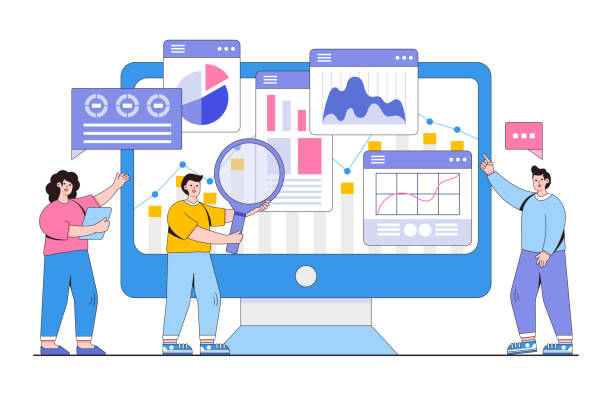
The world of the web is rapidly evolving, and with it, the concept of fast website design is also undergoing changes and transformations.
From a news perspective, numerous technological innovations are emerging that promise to make the web experience faster and smoother than ever.
One of the most important of these advancements is Accelerated Mobile Pages (AMP).
AMP is an open-source framework for building web pages that load almost instantly on mobile devices.
This technology is particularly effective for news and content-driven sites that require extraordinary speed on mobile.
Another is Progressive Web Apps (PWA), which aim to combine the best features of web and native applications.
PWAs can work offline, have push notifications, and their icons can be installed on the device’s home screen, all while maintaining high loading speeds.
Furthermore, the new internet protocol, HTTP/3, is also expanding, which, with improvements in the transmission protocol (QUIC), minimizes latency and speeds up the user experience.
These technologies and many others indicate that the future of fast website design will depend on lighter, smarter architectures and offline capabilities.
Are you tired of your company’s website not being seen as it should be, and losing potential customers? Solve this problem forever with professional and effective website design by Rasaweb!
✅ Increase brand credibility and gain customer trust
✅ Attract targeted sales leads
⚡ Contact us now for a free consultation!
Successful Case Study of Fast Website Design
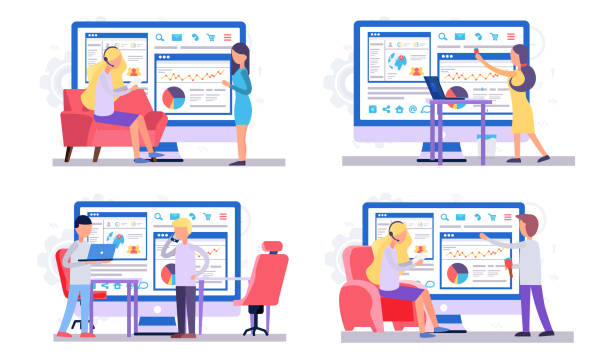
To more tangibly understand the impact of fast website design, let’s examine an entertaining case study.
Suppose ‘Fara Web,’ a large online electronics store, faced site loading speed issues.
Their average page loading time was 5 seconds, which resulted in a 60% bounce rate on mobile devices and a 30% decrease in conversion rate.
Fara Web’s technical team decided to embark on a comprehensive speed optimization project.
They first optimized images, used the WebP format, and implemented Lazy Loading.
Next, they minified their CSS and JavaScript codes and configured them for asynchronous loading.
Due to high traffic volume, they migrated to a stronger cloud hosting and activated an international CDN.
What was the result? Within three months, the average site loading time decreased to 1.5 seconds! This significant reduction brought the mobile bounce rate down to 25% and increased the conversion rate by 45%.
Their monthly sales grew by an average of 20%, and their ranking in Google search results for important keywords improved.
This example shows that fast website design is not just a technical topic, but a strategic investment for business success that brings tangible and measurable results.
Practical Steps to Achieve Fast and Sustainable Website Design

Achieving fast website design is not a one-time process, but a continuous effort that requires constant monitoring and optimization.
This section provides you with practical guidance for maintaining and improving your site’s speed.
The first step is prioritizing Core Web Vitals optimization.
These metrics (Largest Contentful Paint, Cumulative Layout Shift, First Input Delay) have been introduced by Google as vital user experience indicators and should be at the top of your optimization list.
Second, careful selection of themes and plugins.
Always ensure their performance and optimization before use, and avoid heavy and unnecessary resources.
Third, using automation tools.
Tools like Gulp or Webpack can automate processes like compression, file concatenation, and image optimization, which are very useful in fast website design.
Fourth, regularly updating your Content Management System (CMS) and its components.
These updates often include performance and security improvements that contribute to site speed stability.
Fifth, continuous and regular monitoring of site speed using the tools previously introduced.
This monitoring helps you quickly identify and resolve any drop in speed.
By following these steps, you can ensure a fast and stable website design for your users.
Frequently Asked Questions
| No. | Question | Answer |
|---|---|---|
| 1 | What does fast website design mean? | Optimizing a website for fast page loading, improved user experience, and SEO ranking. |
| 2 | Why is website loading speed important? | Increased user satisfaction, reduced bounce rate, improved SEO, and increased conversion rates (sales/action). |
| 3 | What tools are available for testing site speed? | Google PageSpeed Insights, GTmetrix, and Pingdom Tools are common tools. |
| 4 | What are the main factors slowing down a website? | Unoptimized images, heavy JavaScript and CSS code, poor hosting, and lack of caching. |
| 5 | What is “Caching” and how does it help site speed? | Temporary storage of site data in the user’s browser or on the server for faster loading on subsequent visits. |
| 6 | How to optimize images to increase site speed? | Reducing image size (compression) without significant quality loss, using modern formats (WebP), and adjusting appropriate dimensions. |
| 7 | What role does CDN (Content Delivery Network) play in fast website design? | Distributing website content across various servers worldwide to deliver content from the closest server to the user. |
| 8 | Does choosing suitable hosting affect site speed? | Yes, quality hosting and powerful servers are essential for fast site loading. |
| 9 | What is Minification and why is it used? | Removing extra characters (whitespace, comments) from HTML, CSS, JavaScript code to reduce file sizes. |
| 10 | What is the relationship between responsive design and site speed? | Responsive design means proper display on various devices; if not implemented correctly, it can create extra load and reduce speed. Responsive optimization is important for speed. |
And other services of Rasaweb Advertising Agency in the field of advertising:
Smart Sales Automation: A new service for increasing click-through rates through marketing automation.
Smart Marketplace: An effective tool for user interaction with the help of attractive UI design.
Smart Advertorial: An exclusive service for increasing site visits based on real data.
Smart UI/UX: A fast and efficient solution for customer acquisition focusing on attractive UI design.
Smart Advertorial: A new service for increasing sales through user experience customization.
And over a hundred other services in the field of internet advertising, advertising consultation, and organizational solutions.
Internet Advertising | Advertising Strategy | Advertorial
Sources
Website Speed Optimization on Digikala MagImportant Tips for Better Site Performance on ZoomitImpact of Fast Website Design on SEO on ISNA News AgencyImportance of Strong Online Presence on Tabnak
? Ready to revolutionize your business in the digital world? Rasaweb Afarin Digital Marketing Agency, with expertise in SEO, content marketing, and corporate website design, is your trusted partner on the path to growth and success.
📍 Tehran, Mirdamad Street, next to Bank Markazi, Kazeroon Jonoubi Alley, Ramin Alley, No. 6



